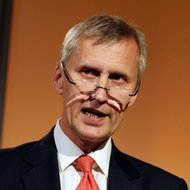WASHINGTON — The Federal Reserve said on Thursday that it sent $88.9 billion in profits to the Treasury Department in 2012, a record that reflected the vast expansion of the central bank’s investment portfolio.
The Fed is required by law to hand over a large majority of its profits, a long-standing provision that has become a lot more lucrative in recent years. Because the money is transferred at regular intervals throughout the year, Thursday’s report does not affect the imminent arrival of the debt ceiling.
As part of its campaign to stimulate the economy, the Fed over the last five years has amassed $2.7 trillion in Treasury securities and mortgage-backed securities. And the central bank is still expanding its holdings by $85 billion a month.
The interest payments on those securities are the primary source of the Fed’s profits. The Fed has transferred a total of $335 billion to the Treasury since 2009, compared with $147 billion in the previous five years, adjusted for inflation. The Fed has transferred at least some profit to the Treasury every year since 1934.
Because the Fed mostly holds debt issued by the federal government, its profits — which totaled $91 billion in 2012 — are largely payments from the government. By returning that money to the government, the central bank in effect is letting the government borrow at no cost.
Some conservative politicians say this back-and-forth — and the Fed’s broader efforts to reduce interest rates — are worsening the government’s fiscal problems by making debt seem less onerous and spending cuts seem less necessary.
The Fed’s chairman, Ben S. Bernanke, has acknowledged the benefit, jokingly describing the savings as “interest that the Treasury doesn’t have to pay to the Chinese.” But Mr. Bernanke and other Fed officials note that the purchases have their own purpose, to stimulate the economy, and will not continue indefinitely. They also note that Congress is responsible for its own behavior.
The Fed buys Treasuries and mortgage bonds to make them less profitable, which makes borrowing cheaper and encourages investors to take larger risks on potentially more lucrative, alternative investments. Returns on Treasuries are so low that many investors are losing money after adjusting for inflation. The Fed’s ability to profit nonetheless is a result of its unique business model: it pays for securities by creating money.
But there are risks. Higher interest rates would reduce the value of the Fed’s securities. And the central bank has incurred a new cost in recent years, paying interest on the reserves that private banks keep with the central bank. That has allowed the Fed to buy assets without increasing the amount of money in circulation, but keeping the money in its vaults could require it to pay higher rates as the economy improves.
The Fed spent about $4.9 billion on its own operations last year. It provided another $387 million to finance the Consumer Financial Protection Bureau, the agency created by the Dodd-Frank Act in 2010 to take over the work of protecting consumers after lawmakers decided that the Fed and other federal banking regulators had failed to do so.
Article source: http://www.nytimes.com/2013/01/11/business/economy/feds-2012-profit-was-88-9-billion.html?partner=rss&emc=rss




